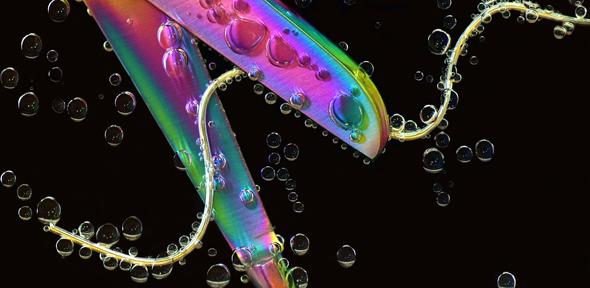Clik here to view.

The team, led by Professor Jussi Taipale, now at the Department of Biochemistry, Cambridge, found that CRISPR-Cas9 triggers a mechanism designed to protect cells from DNA damage, making gene editing more difficult. Cells which lack this mechanism are easier to edit than normal cells. This can lead to a situation where genome-edited cell populations have increased numbers of cells in which an important mechanism protecting cells against DNA damage is missing.
Discovered in bacteria, the CRISPR-Cas9 system is part of the armoury that bacteria use to protect themselves from the harmful effects of viruses. Today it is being co-opted by scientists worldwide as a way of removing and replacing gene defects.
One part of the CRISPR-Cas9 system acts like a GPS locator that can be programmed to go to an exact place in the genome. The other part – the ‘molecular scissors’ – cuts both strands of the faulty DNA so that it can be replaced with DNA that does not have the defect.
However, in a study published today in the journal Nature Medicine, researchers found unexpected consequences from using CRISPR-Cas9.
“We managed to edit cancer cells easily, but when we tried to edit normal, healthy cells, very little happened,” explains Dr Emma Haapaniemi from the Karolinska Institutet, Sweden, the study’s first author.
“When we looked at this further, we found that cutting the genome with CRISPR-Cas9 induced the activation of a protein known as p53, which acts like a cell’s alarm system, signalling that DNA is damaged, and opens the cellular ‘first aid kit’ that repairs damage to the DNA. The triggering of this system makes editing much more difficult.”
In fact, this process went further, leading to the strong selection of cells that lacked the p53 pathway. Absence of p53 in cells makes them more likely to become tumorous as damage can no longer be corrected. Around a half of all tumour cells are missing this pathway.
“CRISPR-Cas9 is a very promising biological tool, both for research purposes and for potential life-saving medical treatments, and so has understandably led to great excitement within the scientific community,” says Professor Taipale, who led the work while at the Karolinska Institutet.
“We don’t want to sound alarmist, and are not saying that CRISPR-Cas9 is bad or dangerous. This is clearly going to be a major tool for use in medicine, so it’s important to pay attention to potential safety concerns. Like with any medical treatment, there are always side effects or potential harm and this should be balanced against the benefits of the treatment.”
The team found that by decreasing activity of p53 in a cell, they could more efficiently edit healthy cells. While this might also decrease the risk of selecting for p53-deficient cells, it could leave cells temporarily vulnerable to mutations that cause cancer.
Professor Taipale says that once they better understand how the DNA response is triggered by the cut, it may be possible to prevent this mechanism kicking in, reducing the selective advantage of cells deficient in p53.
“Although we don’t yet understand the mechanisms behind the activation of p53, we believe that researchers need to be aware of the potential risks when developing new treatments,” he adds. “This is why we decided to publish our findings as soon as we discovered that cells edited with CRISPR-Cas9 can go on to become cancerous.”
The research was supported by the Knut and Alice Wallenberg Foundation, Cancerfonden, Barncancerfonden and the Academy of Finland.
A second team in Novartis Research Institute in Boston, MA, has independently obtained similar results. They are also published today in the same journal.
Reference
Haapaniemi, E et al. CRISPR/Cas9-genome editing induces a p53-mediated DNA damage response. Nature Medicine; 11 June 2018; DOI: 10.1038/s41591-018-0049-z
More research needs to be done to understand whether CRISPR-Cas9 – molecular ‘scissors’ that make gene editing a possibility – may inadvertently increase cancer risk in cells, according to researchers from the University of Cambridge and the Karolinska Institutet.
Image may be NSFW.
Clik here to view.
The text in this work is licensed under a Creative Commons Attribution 4.0 International License. Images, including our videos, are Copyright ©University of Cambridge and licensors/contributors as identified. All rights reserved. We make our image and video content available in a number of ways – as here, on our main website under its Terms and conditions, and on a range of channels including social media that permit your use and sharing of our content under their respective Terms.